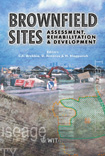Environmental Balancing Of Brownfield Redevelopment
Price
Free (open access)
Transaction
Volume
55
Pages
Published
2002
Size
570 kb
Paper DOI
10.2495/BF020181
Copyright
WIT Press
Author(s)
V. Schrenk
Abstract
Within the context of sustainable development, it is important to always consider the impact of activities, such as the preparation of brownfield construction sites (subsurface remediation/demolition of buildings), on the environment. In the Federal Republic of Germany, the consideration of environmental impacts, including those resulting from the remediation of contaminated sites, is defined in the German Federal Soil Protection Act. To date, first \“isolated” approaches for the environmental balancing of brownfield redevelopment measures exist which are comparable to the life-cycle assessment of industrial products. The Environmental Protection Agency of the Federal State of Baden-Wurttemberg (LfU) has developed a software tool for the environmental balancing of remediation techniques [1]; in Switzerland, investigations concerning the ecological impacts of building rubble disposal exist [2]. An examination or environmental balancing of complete brownfield redevelopment projects (subsurface remediation of the property, demolition of buildings, preparation of the site for new residence) has not been published so far. This may be due to the difficulties in obtaining the extensive data necessary for such a procedure. However, an extensive environmental balancing of brownfield redevelopment projects could be the basis for both an ecological and an economic optimization of brownfield redevelopment. At the research facility for subsurface remediation (VEGAS) at the Universitat Stuttgart, a research project regarding environmental balancing has been started with the aim of extensively balancing brownfield redevelopment projects under ecological criteria.
Keywords




